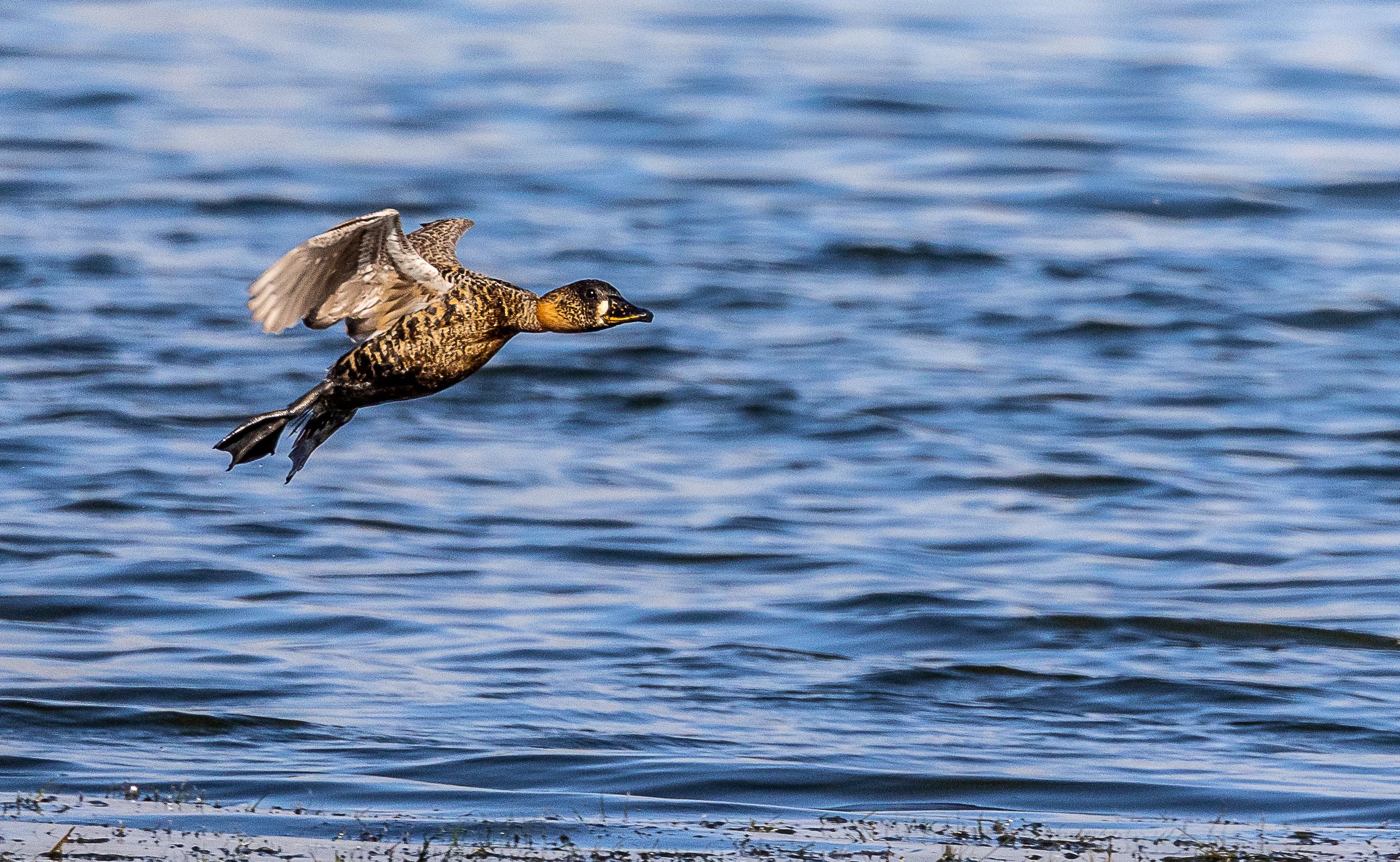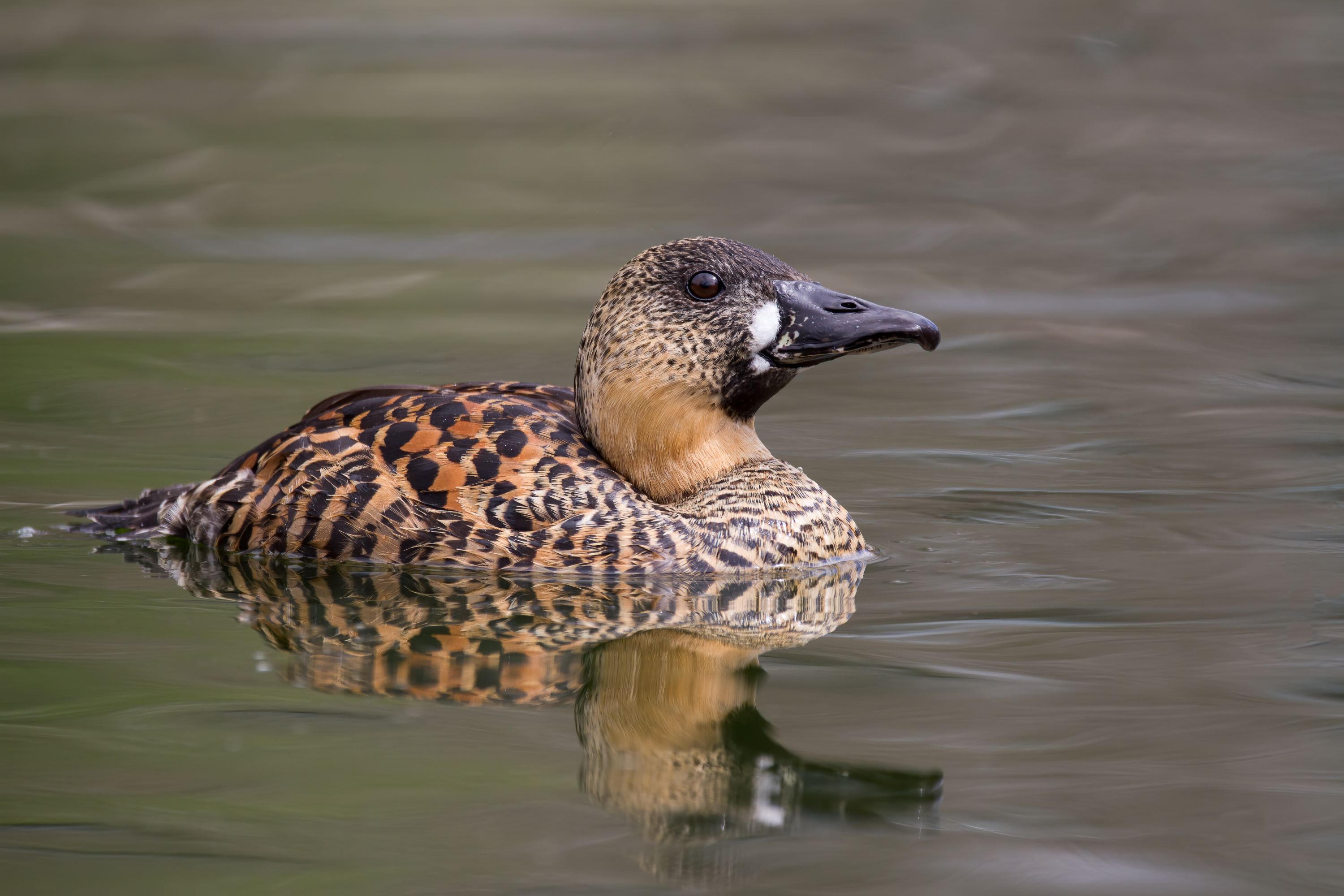
The White-Backed Duck: An Elusive Aquatic Bird
Introduction
The White-Backed Duck (Thalassornis leuconotus) is a unique species within the waterfowl community, known for its elusive nature and distinctive features. While this species is not found in Utah or North America, its habits and characteristics offer interesting insights into the diversity of waterfowl behaviors and adaptations globally.
Description and Identification
The White-Backed Duck is a small to medium-sized bird, distinguished by its characteristic white back and rump, visible only in flight, against a predominantly dark brown plumage. They have a robust body, a small head, and a short neck, with a bill that's somewhat broader at the tip than at the base. The male and female are similar in appearance, though the male is generally slightly larger.
Habitat and Range
Native to Sub-Saharan Africa and Madagascar, the White-Backed Duck favors habitats such as shallow freshwater lakes, marshes, and swamps, particularly those with dense vegetation like reeds and papyrus. These habitats provide both the food resources and the secluded breeding sites that are essential for their survival.

Behavior and Social Structure
The White-Backed Duck is known for its secretive and reclusive behavior, often remaining hidden among aquatic vegetation. They are typically solitary or found in small groups, and they're more active during dawn and dusk (crepuscular). Unlike many duck species, they are relatively quiet, with only a few soft calls noted.
Diet and Foraging
Their diet primarily consists of seeds, roots, and the leaves of aquatic plants, as well as small fish, amphibians, and aquatic invertebrates. The White-Backed Duck forages by diving and swimming underwater, using its feet for propulsion. This diving ability is a distinctive trait, setting them apart from many other duck species.
Breeding and Nesting
Breeding behaviors of the White-Backed Duck are less studied, but they are known to nest in dense wetland vegetation, often far from open water. The female lays a clutch of about six to ten eggs, which she incubates alone. The chicks are precocial and able to swim and dive shortly after hatching.
Conservation Status
The White-Backed Duck is currently classified as Near Threatened by the IUCN, with habitat destruction being the primary threat to their populations. Wetland drainage for agriculture and human settlement has led to significant habitat loss for these ducks across their range.
Global Significance and Birdwatching
While the White-Backed Duck is not a species found in Utah or the wider North American region, it represents the vast diversity of the Anatidae family. For birdwatchers and nature enthusiasts in Utah, understanding species like the White-Backed Duck broadens the appreciation for global bird species, their unique adaptations, and the conservation challenges they face.
Conclusion
The White-Backed Duck, with its distinctive appearance, specialized behaviors, and habitat preferences, is a unique member of the waterfowl community. Its story underscores the importance of global wetland conservation and the need to protect the diverse range of species that rely on these habitats. For the Utah Outdoors hiking community and bird enthusiasts worldwide, the White-Backed Duck serves as a reminder of the ecological importance of wetlands and the rich biodiversity they support, even far beyond the borders of Utah.